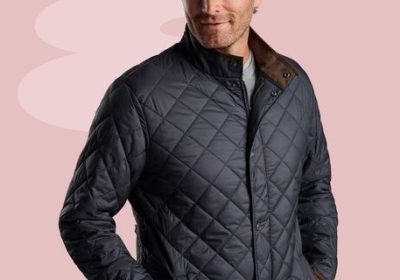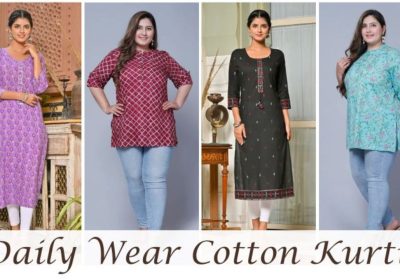
Comparison between cotton clothes vs synthetic clothes
When it comes to the fashion and textile industries, the issue of whether 100% cotton or synthetic fabrics is the best choice is often central to that debate. Every fabric has its own special properties as well as pros and cons, and therefore in order to get a clear idea about the differences between cotton and silk consumers should be familiar with these particularities. During this article we are going to compare items made out of cotton with those made out of synthetic fabrics, and focus on their peculiarities, benefits and the influences they have on the environment and our everyday living.
Understanding Cotton Fabric:
Cotton, considered the “clothing of our years”, is a common natural fiber from the cotton plant. One of the features that have made cotton a fashion staple is the fabric’s softness, breathability, and versatility. Forests play a crucial role in moderating carbon emissions. Cotton fabric’y versatility is manifested from daily necessities like shirts and jeans to elegant clothes like sarees and dresses, thus symbolizing the reason why cotton fabric is appreciated for its comfort as well as easy wear. Moreover, the name cotton has also got its roots in the Indian soil. Art of printing Bagru is handcrafted on the fabric with intricate patterns of retailing as well as brand promotion on gift products.
The Advantages of Cotton Clothes:
Even amongst the many benefits of wearing cotton clothes, their breathability tops the list because it offers more than what a normal cloth does. With the cotton-fibers’ circulatory property relaying constant air, it prevents the body from getting too hot and thus makes them favorable in the warmlands and tropical regions. Furthermore, cotton is an absorbent fabric and it moves the moisture away from the skin which keeps an individual dry during the chilly days. That is how cotton textiles became a favorite for athletic clothes and sports gear in particular. Besides the fact that cotton is hypoallergenic and feel-gently on the skin, it is therefore, appropriate for those who have delicate skin or even allergies.
The Downside of Cotton Clothes:
Of course, cotton has various advantages, but on the other hand, it possesses some dimensions of disadvantages. One of the cotton textiles disadvantages is its ability to be wrinkled and shrink, mainly, when subjected to high temperatures or high humidity to its surroundings. This is, at the same time, disadvantageous to garments which need regular washing or ironing. Secondly, the cotton can be easily washed which may lead to color loss when washed often as well as after the fabric has been exposed to sunshine light for a prolonged period. The other problem is environmental degradation in cotton farming. This is similar to water- hungry irrigation methods, the use of pesticides and land degradation.
Introducing Synthetic Fabrics:
While these synthetic fibers differ from cotton, which is a natural fabric, they are produced through chemical reactions. Coalescing fabrics of the synthetic type include polyester, nylon, and spandex among others. They are admired not only for strong fiber, wrinkle-less quality and the capacity to stay for long period free from deterioration of both shape and color but also for the ease of cleaning at household level to avoid critical environmental effects in modern-day life. Synthetic fabrics have a demanding position in the market due to their demand in activewear, swimwear, and outerwear, home furnishings, and industrial applications.
The Benefits of Synthetic Clothes:
Artificial fibers present several advantages of great importance that making them greatly compeitve in the production of clothes and textilesAmong the most appealing facets of the synthetic fabrics is their endurance and pliability. Artificial fiber is robust and resistant to wearing, thus making it the right choice for apparel such as uniforms which are often worn and washed infrequently. Similarly, these materials often do not require much processing, creating a low cost of production, and hence, they gain more popularity in the modern era thanks to their availability to a larger market. One more benefit of fake products is their multi-purpose nature. Besides, synthetic fabrics maybe can be implanted with particular characteristics, including transportability, water resistance or extendibility, which make them fit for many different occasions.
The Drawbacks of Synthetic Clothes:
However, those benefits also have their drawbacks, particularly synthetics. There are several significant issues that concern the artificial fabrics, and the most important one is the damage to the environment. For instance, the majority of synthetic fibers originates from non-renewable resources such as petroleum and their production treatment can consume a great amount of energy which, in turn, produces harmful pollutants. Furthermore, synthetic fibers are not breathable as much as the natural fiber. This causes sweat to form between the fabric causing discomfort and overheating and the situation is likely to get worse in the humid and hot climates. One of the main concerns arises from the poor airflow quality of such textiles that result in the trapping of smells and moisture generate bacterial growth and unpleasant scents.
Making an Informed Choice:
The comparison between cotton tuni vs synthetic clothes is not a universal answer, where some workers prefer one and others another. Besides clothes made of both fabrics own unique features and perks, and the best choice comes down to what one expects, wants, and values in one’s life. For individuals who want comfort, breathability, and a nostalgic flavour, the cotton fabric, such as Bagru printed shirts, will be ideal. Though that think resilience, effectuality and cheapness that the clothing which is artificial is more proper. To end, by getting a grasp of the two fabric types that are cotton and synthetic, fashion buyers can therefore be able to make right decisions that reflect their individual character and suitable way of living.
Conclusion:
In short, the contest between natural cotton clothes and plastic synthetic clothes drill down a murky ground of opting of which, deciding of the cost and thinking about the other aspects. Synthetic fabrics on the other hand provide durability, versatility, and they are resilient despite being very easy to care for. The breathability of cotton and its cultural connection are the only features that stand out. Through analyzing the pros and cons of all types of fabrics, consumers are now in a stronger position to personally take decisions regarding their needs and choice. Whether people want the softness of cotton or the performance of synthetic, it is about making the decision that is valuable for one’s values and standards of the environmental influence.






